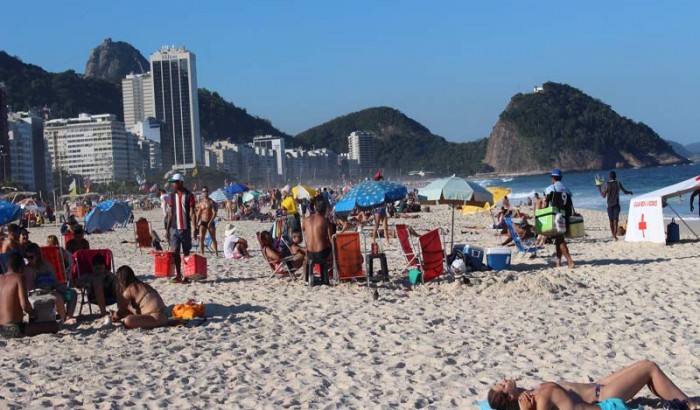BY: Liliana Rocio, Senior Editor For World Liberty TV
Located in Zona Sul, Copacabana Beach : is one of the most famous and most beautiful beaches in the world. The atmosphere is very vibrant and the people are colorful and fun loving. Get to her by taking the subway on Line 1 or take one of the pubic buses. Copacabana beach runs between Princesa Isabel Avenue and lifeguard Post 6.

Dr.Abbey with 2 kid Soccer players
The view to the left of Copacabana beach is the towering mountain of Sugar Loaf and Fort Duque de Caxias built in 1779. On the right is Copacabana Fort, which dates back to 1914. It houses the Army Historical Museum. The beach runs for 2.2 miles (4 km) in an east west direction running from Postos Dois to Posto Seis. Stop by one of the several beach bars and enjoy Food and Drinks .Take a walk along the beach to enjoy some of the most incredible sand sculptures.
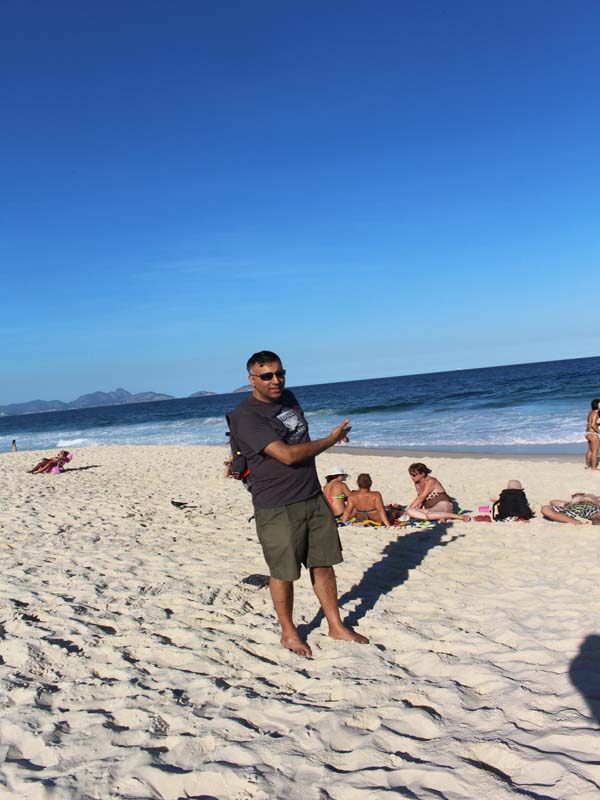
Dr.Abbey Walking on Copacabana Beach
Copacabana. Lying in the shadow of the famed Sugarloaf Mountain, the four-kilometre-long beach is a hub of activity all year round. When the sun is shining, it seems most of the city’s bronzedcariocas (locals) head here to play football, toast themselves and party at the innumerable caipirinha kiosks and bars along the back of the beach. The rocky outcrop at the south end is Arpoador, popular with the city’s surfing community, and one of the best spots in the city for watching the sunset.

One of many Cafes on the Beach
Considered one of the most famous beaches in the world, Praia de Copacabana is nicknamed the “Little Princess of the Sea”. Its ancient name Tupi was Sacopenapã: “the sound and the flapping wings of the herons” and its golden age was the 30’s through the 50’s, when Copacabana Palace was the meeting pont of international jet-setters. The 4 km sandy beach, stretching from Posto 2 (lifeguard watchtower 2) to Posto 6 (lifeguard watchtower 6), is bordered by two historic forts: Fort Copacabana (1914) and Fort Duque de Caxias (1779). Along the beach runs the well-known promenade representing ocean waves (designed by the Brazilian architect Roberto Burle Marx and achieved in 1970). Have a coconut water at one of the many kiosks and enjoy the wonderful view of Rio bay.
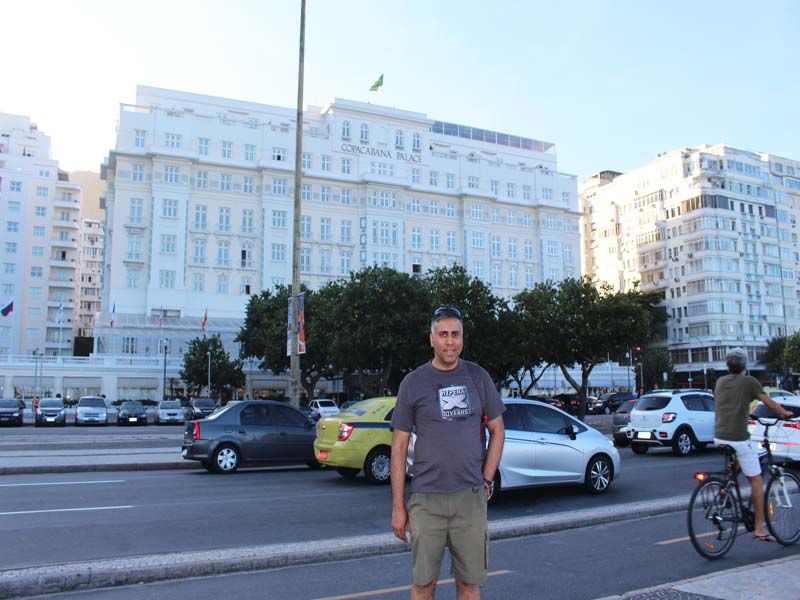
Copacabana Palace Hotel
Ipanema beach : is bordered by Arpoador Beach on one end and Leblon Beach on the other end. This beach is considered one of the main centers of activity for the city of Rio. One of the most expensive places to live, the neighborhood is full of wealthy residents.
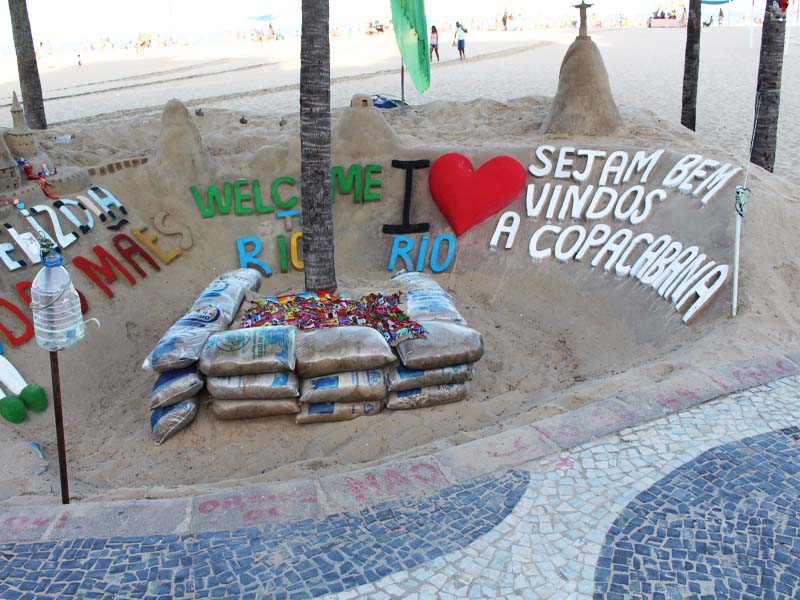
Sand Castles on Beach
Considered the “little Paris” of Rio it is renowned for its avant-garde galleries, bookstores and movie theatres. Stop in at H. Stern, one of the most popular jewelry stores in the area, and take a tour of their museum. Not only is it free but you receive a little box of semi-precious and precious stones as a gift. Every Sunday the Hippie Fair is held with vendors selling everything from wooden dolls to swizzle sticks topped with parrots. Garcia D’Avila street has some of the best brands of the city as Osklen, Amsterdam Sauer and many others.
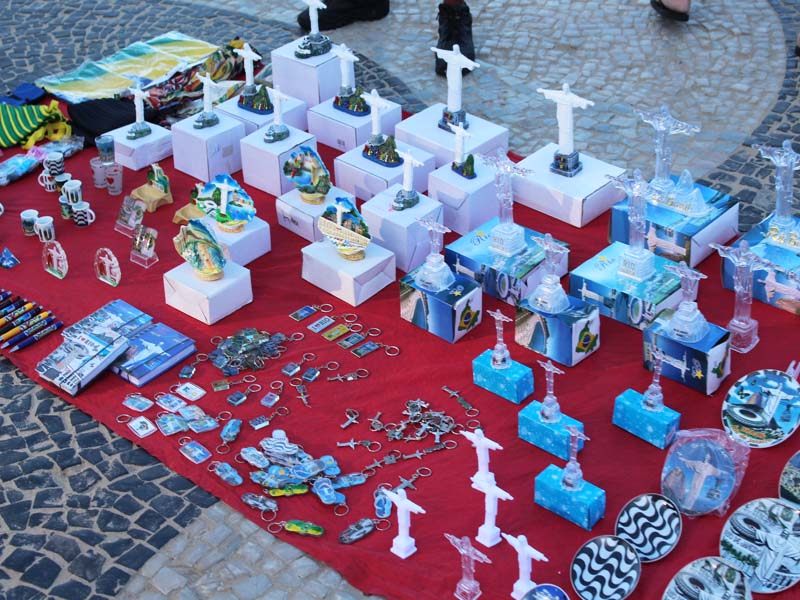
Vendors selling many items
The beaches of Rio de Janeiro are divided into tribes, but Ipanema is where that note is so strong. In front of the country club meet young beautiful and high class people. It’s certainly the place to see and be seen. In the Posto 9, near Joana Angélica Street the public is more laid back and alternative.
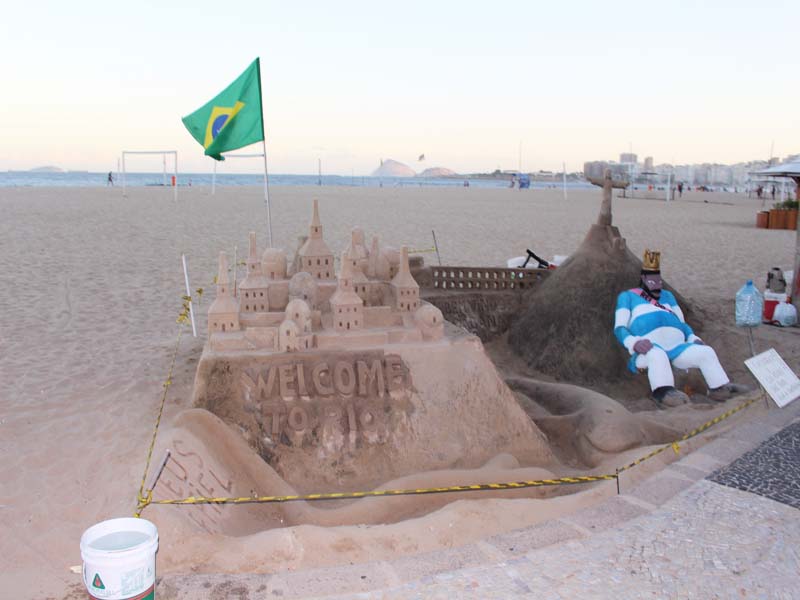
One of Many Sand Castles
See More Copacabana and Ipanema Beaches in Rio de Janeiro -2017, in World Liberty TV Travel and Tourism Channel by Clicking here.









